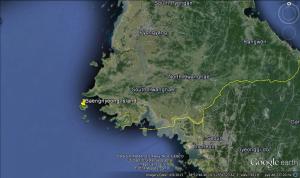On Monday, 31 March, tensions heated up on the Korean peninsula when North Korea went forward with live-fire exercises near the Yellow Sea, the waters to the west of both North and South Korea. Deciding that it needed to provoke the world into paying attention to it, North Korea reached for its artillery arsenal and began slinging rounds into the water.
North Korea’s actions were interpreted as provocation when many of their rounds landed in South Korean waters near Baengnyeong Island, which is about 10 miles from the North Korean mainland. South Korea responded by rolling out its K9 self-propelled 155mm howitzers and responding in kind, hurling 300 rounds into the disputed waterway. The New York Times reports that the North Koreans fired multiple rocket launchers in addition to howitzers, but due to the secretive nature of the North Korean People’s Army, it does not specify the type. However, the NKPA is known to employ Soviet-made artillery such as 152mm D-20 towed howitzers, 130mm M-46s (re-worked to be self-propelled by mounting them on tank chassis), and BM-11 and BM-24 multiple rocket launchers.
The Koreas exchanged artillery fire in the same area in 2010, when North Korean fire killed four civilians. It is also the same area where the Republic of Korea Navy ship Cheonan was sunk by a North Korean torpedo. North Korea is widely regarded as using military pressure to force diplomatic negotiations, and in this case the armament-of-choice has been the King of Battle.

